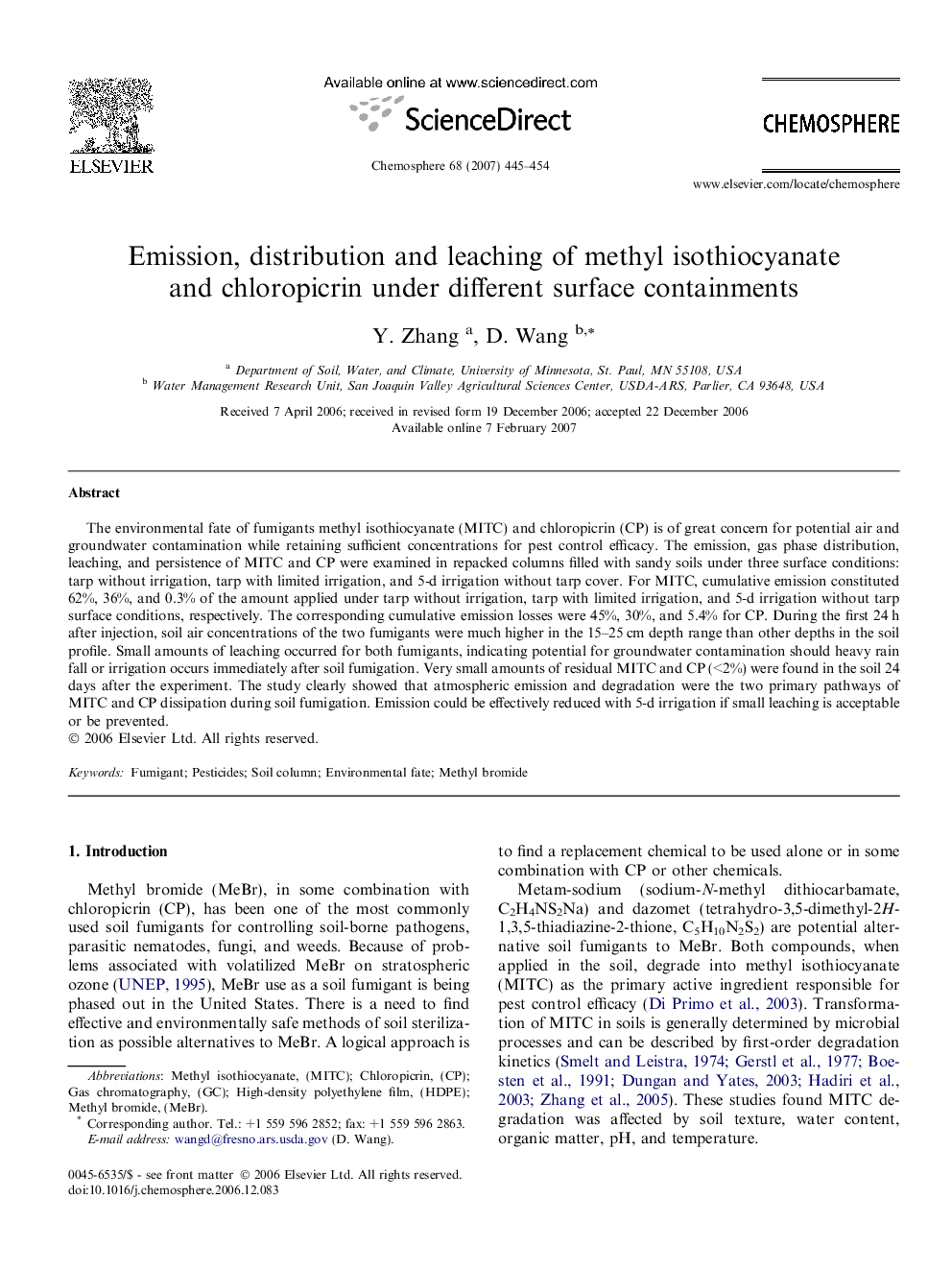| Article ID | Journal | Published Year | Pages | File Type |
|---|---|---|---|---|
| 4415589 | Chemosphere | 2007 | 10 Pages |
The environmental fate of fumigants methyl isothiocyanate (MITC) and chloropicrin (CP) is of great concern for potential air and groundwater contamination while retaining sufficient concentrations for pest control efficacy. The emission, gas phase distribution, leaching, and persistence of MITC and CP were examined in repacked columns filled with sandy soils under three surface conditions: tarp without irrigation, tarp with limited irrigation, and 5-d irrigation without tarp cover. For MITC, cumulative emission constituted 62%, 36%, and 0.3% of the amount applied under tarp without irrigation, tarp with limited irrigation, and 5-d irrigation without tarp surface conditions, respectively. The corresponding cumulative emission losses were 45%, 30%, and 5.4% for CP. During the first 24 h after injection, soil air concentrations of the two fumigants were much higher in the 15–25 cm depth range than other depths in the soil profile. Small amounts of leaching occurred for both fumigants, indicating potential for groundwater contamination should heavy rain fall or irrigation occurs immediately after soil fumigation. Very small amounts of residual MITC and CP (<2%) were found in the soil 24 days after the experiment. The study clearly showed that atmospheric emission and degradation were the two primary pathways of MITC and CP dissipation during soil fumigation. Emission could be effectively reduced with 5-d irrigation if small leaching is acceptable or be prevented.
